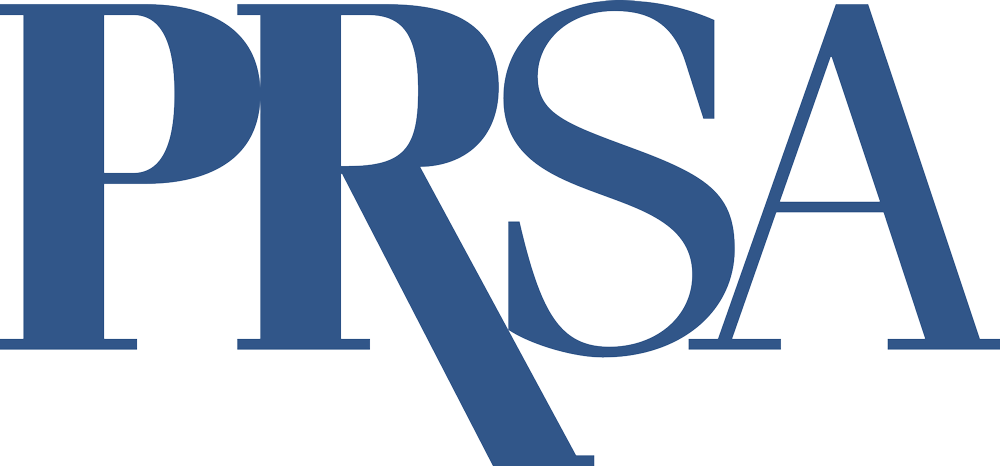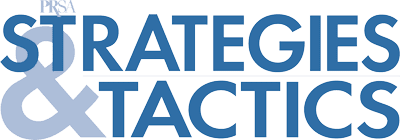The Career Story Every PR Pro Should Be Telling
By Kanika M. Watson, APR
August 2025
Experienced PR professionals will eventually reach a moment in their careers when the messaging becomes personal. The spotlight shifts from your clients and campaigns or causes you support to focus on you. Maybe it’s a promotion that stretches your leadership, a pivot into unfamiliar territory or the constraints of a role you have outgrown.
No matter the reason, the same question often arises: What is my story?
Résumés and LinkedIn profiles are useful tools that show where we’ve been, but it’s the narrative behind those milestones that reveals who you are, what you stand for and the impact you’re ready to make. After dedicating our careers to championing the voices of others, this may be the most important story we can tell.
From résumé to revelation
As an executive coach to communication professionals, I’ve seen how difficult this can be, especially after a major disruption. One client, a former public affairs director, reached out after an unexpected layoff.
After 18 years, the role was gone, along with a sense of identity she hadn’t realized was built around it. She immediately turned to her résumé, reworking the bullet points, adding certifications, and searching for the right keywords and phrasing to help her stand out.
I encouraged her to pause for a moment. Before we began rewriting, we needed to find the leader behind the page — the person behind the strategist, communicator and trusted voice during uncertain times.
Together, we uncovered her true story. Her leadership guided national response, shaped public trust and drove high-stakes strategy across complex government systems. Once we redefined her experience as a leadership narrative, everything shifted.
She refreshed her career materials to reflect a more authentic and compelling professional brand. That clarity gave her the confidence to approach interviews and networking conversations with her story, not just her recent job title.
Within weeks, she stepped into a new role better aligned with her career goals. Her story reflects a pattern I often see in the career pivots, promotions and reinventions of many professionals.
The blind spot in our own messaging
It can be surprisingly difficult to bring the same clarity to our own careers that we apply to our day-to-day work. Many of us downplay our achievements, bury our growth narrative, and tuck industry insights behind job titles and task lists. It’s a professional blind spot, and it’s more common than we think.
Many of us, especially those in mission-driven spaces, are trained or coached to lead with objectivity and keep the attention on the work, not ourselves. Over time, that instinct can quiet our own voice, right when we need it most. We rely on the résumé, lean into humility and assume our contributions speak for themselves.
I’ve seen this time and time again, especially among seasoned communicators in government, nonprofit and public sector roles. I often remind clients: Silence is not a strategy. When your role is shifting or new opportunities are on the horizon, an untold story leaves too much open to interpretation.
According to LinkedIn’s Workforce Confidence survey (April 2025), job optimism fell to its lowest level since early 2020, with professionals feeling increasingly uncertain about stability and growth.
In moments like these, especially as technology continues to reshape how we work, your story becomes more than a résumé update. It becomes a human differentiator. A clear narrative helps you stand out, stay relevant and build a real connection. Without it, you risk getting lost in a crowded field. This isn’t a question of talent. It’s a missed opportunity to shape your message and influence how others see your value.
Common career storytelling pitfalls
Recognizing blind spots is the first step, but what often holds many of us back are a few avoidable missteps in how we frame our experience. Working with clients across all levels, and most recently in a workshop I led on career storytelling, I observed three common patterns that can undermine an otherwise strong narrative:
• Focus on the journey, not the job list. Listing job titles and responsibilities in linear order may look neat on a page, but without context or evolution, even robust résumés can fall flat.
For example, instead of “Managed press releases,” a stronger frame is: “Led a public information campaign that shifted public sentiment during a major policy rollout.”
• Don’t downplay purpose and perspective. Many professionals hesitate to communicate the values that drive their leadership. Yet, aligned purpose is often what distinguishes one candidate from another.
One senior communicator I worked with had spent years advancing public health messaging in underserved communities but never named it as a core part of her professional identity. Once we connected that mission to her broader narrative, it became a powerful reflection of her leadership perspective and values.
• Replace jargon with real results. Buzzwords, such as “results-oriented” or “strategic communicator,” are too vague. What’s more effective is demonstrating impact: “Drove a 40% increase in engagement through targeted storytelling.” Clear language makes your value real, measurable and memorable.
If you recognize yourself in any of these patterns, then you’re not alone, and you’re not stuck. The good news? Your story is within your control. With the right lens and a clear process, you can reshape how you show up and what you’re known for.
• Build a career story that speaks for you. Every story begins with perspective. Before updating your materials or refining your elevator pitch, view your career through a fresh lens with the same precision and purpose you bring to client messaging. Your story deserves the same clarity and creativity you offer others. Here are three steps to guide the process:
- Identify the turning points. What moments defined your growth or marked a meaningful shift? Think beyond the roles and responsibilities. Look for themes in how you’ve led, communicated, solved problems or driven change. These throughlines often reveal your unique leadership story.
- Focus on the impact, not just the activity. Too often, professionals talk about what they did, not the impact they made. Did you shift public perception, increase trust or improve internal culture? Highlight your influence and outcomes, not just the outputs.
- Write a positioning statement. Distill your narrative into a clear, compelling summary that captures what you do, who you serve and the value you deliver. The statement becomes the foundation of how you introduce yourself in interviews, write your LinkedIn headline and profile or guide your résumé summary.
Shaping how others see you, how you lead through change and how you position yourself for the future is the story every PR pro should be telling. It is one of your most powerful strategic assets.
Are you ready to own your career story?



